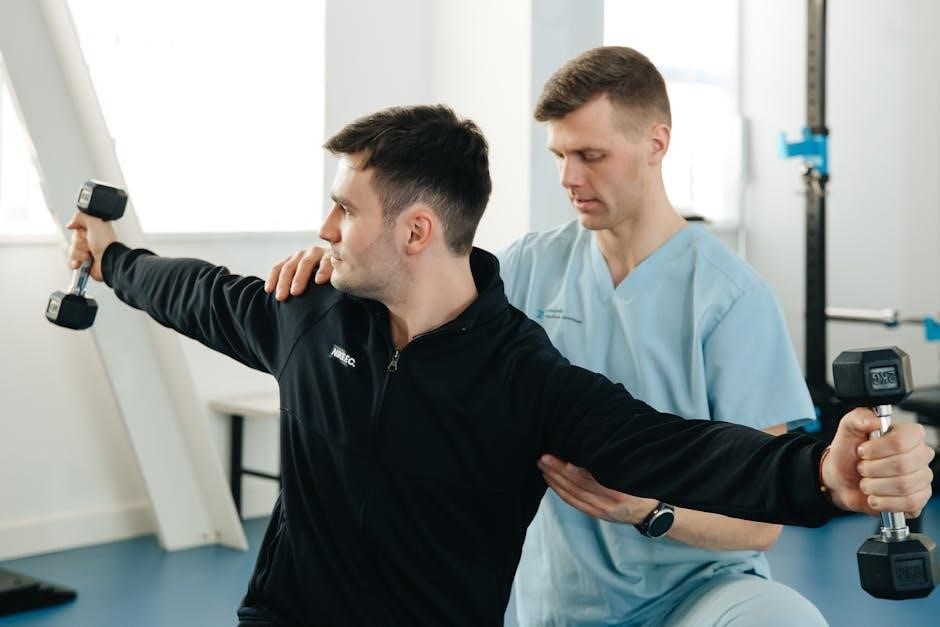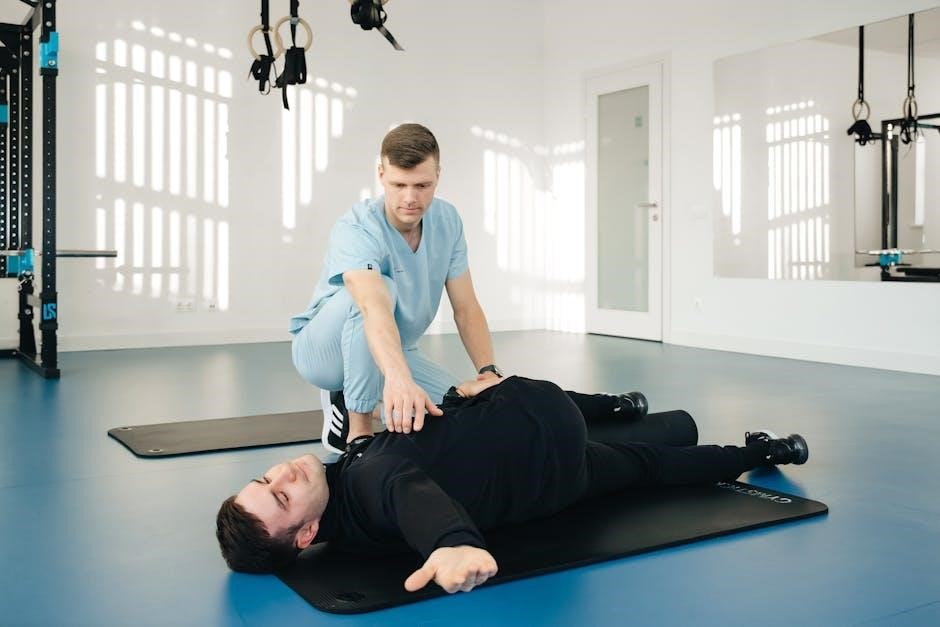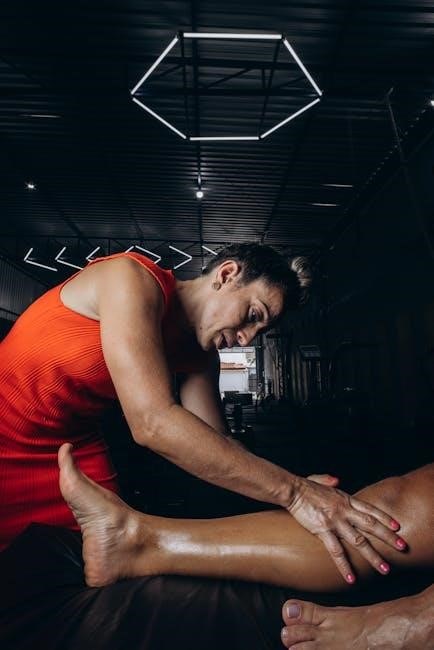MTB manual trainers are tools designed to improve balance, coordination, and rear-wheel control, helping riders master techniques like manuals and wheelies. They hold the rear wheel in place, simulating real riding conditions, and are suitable for riders of all skill levels. Portable and easy to use, these trainers are ideal for home or on-the-go practice, allowing riders to develop muscle memory and confidence in a controlled environment. Whether you’re a beginner or an advanced rider, a manual trainer can enhance your mountain biking skills effectively.
What is an MTB Manual Trainer?
An MTB manual trainer is a device designed to help mountain bikers practice and master the manual technique, which involves balancing on the rear wheel without pedaling. It typically holds the rear wheel in place, allowing the front wheel to lift and move freely. These trainers are specifically created to simulate real-world conditions, enabling riders to improve their balance, coordination, and muscle memory. They are compact, portable, and suitable for both beginners and experienced riders looking to refine their skills. The trainer helps in developing the precise body movements needed for executing manuals effectively.
Importance of Manual Training in Mountain Biking
Manual training is essential for developing the balance, control, and coordination required in mountain biking. It enhances a rider’s ability to navigate obstacles and maintain stability at speed. By practicing manuals, riders improve their muscle memory and reflexes, which are critical for tackling challenging terrain. Manual training also boosts confidence, allowing riders to approach technical sections with precision and composure. Whether on trails or in bike parks, mastering this skill ensures better overall performance and safety. Regular practice with a manual trainer can significantly elevate a rider’s proficiency and enjoyment on the bike.

Benefits of Using an MTB Manual Trainer
MTB manual trainers enhance bike handling skills, improve balance, and boost confidence. They offer a safe, controlled environment to practice techniques like manuals and wheelies, suitable for all skill levels.
Improved Balance and Coordination
MTB manual trainers significantly enhance balance and coordination by stabilizing the rear wheel, allowing riders to focus on precise body positioning and weight distribution. This setup mimics real-world conditions, helping riders develop the muscle memory needed for controlled movements. Regular practice on a manual trainer improves overall bike handling, making it easier to maintain balance during manuals and wheelies. The portability and adjustability of these trainers ensure consistent practice, leading to better control on various terrains. Riders of all levels benefit, as the trainer’s design promotes balance without the bike moving unpredictably, fostering confidence and skill improvement.
Enhanced Muscle Memory
Manual trainers are excellent for building muscle memory, as they allow riders to repeat specific movements consistently. By practicing manuals and balance exercises, riders develop automatic reactions to bike handling, improving overall technique. The trainer’s stable setup ensures that every repetition reinforces proper body positioning and weight distribution, making these skills second nature. Over time, this repetition translates to real-world riding, enabling riders to perform manuals and wheelies with greater ease and confidence, even on challenging terrain.
Convenience and Portability
MTB manual trainers offer unmatched convenience and portability, making them ideal for riders who want to practice anywhere. Their lightweight design and collapsible structure allow easy transport in cars, backpacks, or even on flights. Many trainers disassemble into smaller parts, ensuring minimal storage space. Whether at home, in the garage, or at a remote trailhead, these devices provide a flexible way to hone skills without relying on specific locations. Their portability encourages consistent practice, helping riders improve faster and maintain progress no matter where their adventures take them.

Popular Types of MTB Manual Trainers
MTB manual trainers include the MTB Hopper Balance 2, known for its portability, and DIY manual trainers, which offer a cost-effective solution for riders.
MTB Hopper Balance 2 Trainer
The MTB Hopper Balance 2 Trainer is a lightweight, portable device designed to enhance manual skills. It allows riders to practice rear-wheel balancing at home or on the go. The trainer disassembles into 15 parts for easy transport and storage, making it ideal for both casual and professional training. With adjustable spacers for different tire widths and a weight limit of 120 kg, it suits various bike setups. Users praise its durability and realistic feel, helping riders progress from basic to advanced techniques efficiently.
DIY Manual Trainers
DIY manual trainers offer a cost-effective solution for riders seeking to improve their balance and rear-wheel control. These homemade setups often involve materials like wood or PVC, requiring basic tools for assembly. While they may lack the refinement of commercial products, DIY trainers provide a customizable and affordable way to practice manuals. However, their effectiveness depends on proper construction and design. Some riders find DIY options sufficient for basic skill development, while others prefer the precision and durability of commercial models. DIY trainers are a great starting point for those on a budget or with handyman skills.
Other Commercial Options
Beyond the MTB Hopper, other commercial manual trainers offer innovative solutions for skill development. The Ninja MTB Manual Machine, for instance, provides a durable and foldable design, ideal for both home use and coaching. Brands like Elite and Alpcour also offer magnetic and direct-drive trainers, though their focus is more on general bike training. These options vary in price and features, catering to different rider needs. Portability and ease of assembly are key selling points, making them versatile for riders seeking to enhance their manual and balance skills. Each trainer has its unique benefits, ensuring there’s something for every rider’s preference and skill level.

How to Choose the Right Manual Trainer
When selecting a manual trainer, consider your skill level, portability needs, and durability requirements. Ensure it fits your weight and is easy to assemble. Compare features, read reviews, and check warranties to find the best option for your MTB training goals.
Key Features to Consider
When selecting an MTB manual trainer, prioritize weight capacity, portability, and durability. Look for adjustable designs to accommodate different bike setups and skill levels. Ensure the trainer is sturdy and can handle your weight for safe practice. Portability is key for easy transport, so consider models that disassemble into smaller parts. Additionally, check for ease of assembly and storage solutions. A trainer with a smooth, realistic feel will enhance your training experience. Finally, read reviews and compare features to find the best fit for your riding goals and budget.
Weight and Durability
Weight capacity and durability are critical for a manual trainer. Look for models with a sturdy build, often constructed from durable materials like steel, to ensure longevity. The trainer should support your weight comfortably, with most models accommodating riders up to 110-120kg. A robust design prevents wobbling during practice, providing a stable platform for improving balance and control. Durable construction also withstands frequent use and transport, making it a reliable tool for consistent training sessions. Prioritize trainers with a strong, reliable frame to ensure safety and effectiveness during your workouts.
Assembly and Portability
Manual trainers are designed for ease of assembly and portability. Many models disassemble into lightweight, compact parts, making them easy to transport and store. The MTB Hopper Balance 2, for example, breaks down into 15 pieces for convenient carrying. Quick assembly is a priority, with some trainers ready to use in minutes. Portability is key for riders who practice at home or on the go. Ensure the trainer fits your bike’s tire width and weight capacity for optimal performance. Look for durable, foldable designs that balance ease of setup with stability during use.

Setting Up Your Manual Trainer
Start by unpacking and assembling the trainer, ensuring all parts are securely tightened. Check tire compatibility and adjust the trainer to fit your bike’s specifications. Level the trainer on a flat surface for stability and safe practice. Follow the manufacturer’s instructions for proper setup, and test the balance before starting your training session. Adjustments may be needed to accommodate different bike sizes or tire widths. Ensure the trainer is stable and ready for use before beginning your practice.
Initial Assembly and Adjustments
Begin by carefully unpacking the manual trainer and laying out all components. Follow the provided instructions to assemble the frame, ensuring all bolts are tightened securely. Next, adjust the trainer to fit your bike’s tire width using spacers for proper alignment. Check the weight limit to ensure it can support your bike and rider. Finally, test the balance by gently rocking the bike to confirm stability. Make any necessary adjustments to the frame or spacers for optimal performance. Proper assembly ensures safe and effective training sessions.
Preparing Your Bike

Before using your manual trainer, ensure your bike is ready. Check tire pressure and cleanliness to prevent slippage. Remove any loose accessories that might interfere with the trainer. For optimal performance, use the spacers provided to adjust the trainer to your bike’s tire width. Ensure your bike’s weight does not exceed the trainer’s limit, typically around 120 kg. Double-check that all bolts on the bike, especially the axle nuts, are tightened securely. Proper preparation ensures a safe and effective training session with your manual trainer.

Training Techniques and Tips
Start with short sessions, focusing on balance and body positioning. Gradually increase difficulty by adjusting tire pressure or incline. Practice smooth weight shifts and maintain focus for better control. Incorporate mental preparation to stay calm and patient during drills. Regular practice ensures consistent progress and mastery of manual techniques. Always warm up before training to prevent fatigue and injury. Stay consistent and celebrate small improvements to build confidence and skill.
Basic Manual Techniques
Mastering basic manual techniques begins with proper body positioning and balance. Start on flat ground, standing over the bike with knees slightly bent. Shift your weight rearward to lighten the front wheel, then subtly move your body forward and backward to maintain balance. Focus on smooth, controlled movements and keep your eyes ahead. Practice lifting the front wheel by compressing the suspension and shifting your weight. Use the manual trainer to hone these skills in a controlled setting, building muscle memory for real-world application. Consistency and patience are key to improving balance and coordination.
Advanced Tips for Mastery

For advanced riders, refining manual techniques involves mastering dynamic movements and precision control. Incorporate small obstacles or inclines to simulate real-world challenges, enhancing your ability to maintain balance. Practice shifting your weight subtly while adjusting bike angle to sustain the manual. Transitioning between manuals and wheelies seamlessly is key. Incorporate speed variations to test control and adaptability. Use the manual trainer to perfect these skills, ensuring smooth transitions and consistent posture. Regular practice, even for experienced riders, reinforces muscle memory and refines technique for mastering complex trails with confidence.

Common Mistakes to Avoid
Overlooking proper setup, poor posture, and shifting weight incorrectly are common errors. Ensure the trainer is stable and practice controlled movements to avoid losing balance and confidence.
Balance and Posture Errors
Balance and posture errors are common when using an MTB manual trainer. Many riders lean too far back or forward, disrupting their center of gravity. Incorrect body positioning can make it difficult to maintain balance, leading to frustration. Additionally, poor posture can strain the lower back and reduce control over the bike. It’s crucial to keep the spine neutral, engage the core, and shift weight evenly. Practicing proper posture from the start ensures effective skill development and prevents injuries. Regular adjustments and mindfulness during training sessions can help avoid these mistakes.
Overlooking Proper Setup
Overlooking proper setup is a common mistake when using an MTB manual trainer. Many riders rush into training without ensuring the trainer is correctly assembled or adjusted. Improper alignment or loose connections can lead to instability, making it harder to maintain balance. Additionally, failing to secure the bike properly can result in the trainer moving during practice, reducing its effectiveness. It’s essential to follow the manufacturer’s instructions for assembly and adjustment to ensure safety and optimal performance. Neglecting setup can hinder progress and increase the risk of accidents, so attention to detail is crucial.

Success Stories and Reviews
Riders praise MTB manual trainers for boosting their skills, with many achieving noticeable improvements in balance and control. Users highlight durability and portability as key advantages, making practice efficient and enjoyable.
Customer Testimonials
Customers praise MTB manual trainers for their effectiveness, with many reporting significant improvements in their manual skills. One user shared, “It helped me improve my manuals in just one day!” Another noted, “The design feels realistic, making it easier to practice.” Riders appreciate the portability and durability, with one stating, “It’s built well and folds up neatly for storage.” However, some users found the price high, calling it “200 for a little piece of wood.” Despite mixed opinions, many agree it’s a valuable tool for mastering manuals and building confidence on the bike.
Expert Recommendations
Professional instructors and experienced riders highly recommend MTB manual trainers as essential tools for skill development. Experts emphasize their portability and realistic feel, making them ideal for home or travel use. Many instructors use these trainers in coaching sessions to help riders build balance and muscle memory. Experts suggest starting with short practice sessions and gradually increasing difficulty to master manual techniques. They also highlight the importance of proper setup and consistent practice to achieve optimal results. Overall, manual trainers are endorsed as valuable additions to any mountain biker’s training regimen.
Maintenance and Storage
Regularly clean and lubricate moving parts of your MTB manual trainer to ensure smooth operation. Store it in a dry place to prevent rust and damage. Follow manufacturer guidelines for maintenance and disassembly for storage. Proper care extends the lifespan and performance of your trainer, ensuring it remains effective for skill development and practice sessions. Always check for wear and tear before use and replace any damaged components promptly to maintain safety and functionality.
Caring for Your Trainer
To maintain your MTB manual trainer, clean it regularly with a soft cloth and mild detergent to remove dirt and grime. Lubricate moving parts every few months to ensure smooth operation and prevent rust. Avoid exposing the trainer to extreme temperatures or moisture, which can damage materials. Store it in a dry, secure location when not in use. Check for wear and tear, such as loose screws or worn-out components, and replace them promptly. Proper care extends the trainer’s lifespan and keeps it functioning optimally for effective practice sessions, helping you improve your skills consistently. Regular maintenance ensures safety and performance, making your training sessions more productive and enjoyable. Always follow the manufacturer’s guidelines for specific care instructions tailored to your trainer model. By keeping your trainer in good condition, you can focus on mastering your manual techniques without interruptions or equipment failures. Consistent upkeep also prevents corrosion and ensures all parts remain stable and functional, which is crucial for balance and control during training. Over time, this routine will become second nature, safeguarding your investment and enhancing your overall training experience. Remember, a well-maintained trainer is key to achieving your mountain biking goals. Always inspect the trainer before use to ensure everything is in working order, and make adjustments as needed. This attention to detail will help you stay safe and progress steadily in your skills. With proper care, your MTB manual trainer will remain a reliable tool for improving your riding abilities for years to come. Keep it clean, dry, and well-maintained to enjoy uninterrupted and effective training sessions. Your dedication to maintaining the trainer reflects your commitment to advancing your mountain biking skills, ensuring every practice session is productive and enjoyable. By prioritizing care and maintenance, you can trust your trainer to support your growth as a rider. Whether you’re a beginner or an advanced rider, consistent upkeep ensures your trainer remains a valuable asset in your training regimen. So, take the time to care for your trainer, and it will continue to help you achieve your mountain biking aspirations. Proper maintenance is an essential part of owning an MTB manual trainer, and it’s worth the effort to keep it in prime condition. Your hard work and attention to detail will pay off as you see improvement in your skills and confidence on the bike. Always remember, a well-cared-for trainer is a key to unlocking your full potential as a mountain biker. Therefore, make maintenance a priority to get the most out of your training sessions and enjoy the rewards of consistent practice and progress. Regular cleaning, lubrication, and storage are simple yet effective ways to preserve your trainer’s functionality and longevity. By incorporating these habits into your routine, you’ll ensure your trainer remains a dependable tool for mastering manuals and other essential mountain biking techniques. Over time, this careful maintenance will become a natural part of your training process, allowing you to focus on what really matters—improving your skills and enjoying the ride. So, take pride in your equipment and commit to its upkeep, knowing that it directly contributes to your success as a rider. With a properly maintained trainer, you’ll be able to practice with confidence, knowing your equipment is reliable and ready to support your growth. This mindset of care and responsibility will not only benefit your training but also enhance your overall experience as a mountain biker. Always remember, a well-maintained trainer is more than just equipment—it’s an investment in your progress and passion for the sport. By taking the time to care for it, you ensure that it continues to serve you well, helping you achieve your goals and push your limits on the trails. So, keep your trainer in top shape, and it will keep helping you reach new heights in your mountain biking journey. This mutual relationship between rider and equipment is vital, and with proper care, it will flourish, leading to countless successful training sessions and unforgettable rides. Therefore, never underestimate the importance of regular maintenance—it’s a cornerstone of effective training and a key to your continued success in mastering the manual technique. Always stay proactive in caring for your trainer, and it will remain a trusted companion on your path to becoming a skilled mountain biker. With consistent upkeep, you’ll be able to rely on your trainer to provide the support and stability needed to refine your skills, making every practice session both productive and rewarding. So, embrace the habit of regular maintenance and enjoy the benefits of a well-functioning trainer that aids your progress and fuels your passion for mountain biking. In the end, the effort you put into caring for your trainer is an investment in yourself and your aspirations as a rider. Therefore, make it a priority to keep your trainer in excellent condition, and it will continue to be an invaluable tool in your journey to mastering the manual and beyond. Always remember, a well-maintained trainer is the foundation upon which your skills are built, so take the time to ensure it remains in the best possible shape. Your dedication to maintenance will pay dividends in the form of improved performance and increased confidence on the bike. So, keep your trainer clean, lubricated, and stored properly, and it will serve you faithfully as you pursue your mountain biking goals. With proper care, your trainer will be ready whenever you are, providing the support you need to keep pushing your limits and achieving new heights. Therefore, never overlook the importance of regular maintenance—it’s a crucial step in maximizing the effectiveness of your training and ensuring the longevity of your equipment. By staying committed to caring for your trainer, you’ll create a solid foundation for your training, allowing you to focus on what really matters—improving your skills and enjoying the thrill of the ride. So, take pride in your equipment and make maintenance a priority, knowing that it directly contributes to your success as a mountain biker. With a well-maintained trainer, you’ll be able to practice with confidence, knowing that your equipment is in top condition and ready to help you achieve your goals. This commitment to care and upkeep will not only enhance your training experience but also extend the life of your trainer, making it a worthwhile investment in your passion for mountain biking. Therefore, always take the time to properly maintain your trainer, and it will continue to be a reliable and essential tool in your pursuit of mastering the manual and other advanced techniques. By doing so, you’ll ensure that every training session is productive, safe, and enjoyable, helping you progress steadily toward your aspirations. Remember, a well-cared-for trainer is more than just equipment—it’s a partner in your journey to becoming a skilled and confident mountain biker. So, stay dedicated to its upkeep, and it will remain a trusted companion every step of the way. With consistent care and attention, your trainer will continue to support your growth, allowing you to tackle increasingly challenging trails and techniques with ease and confidence. Therefore, never underestimate the value of regular maintenance—it’s a key factor in your success and enjoyment of the sport. By prioritizing the care of your trainer, you’ll be able to focus on what truly matters—improving your skills, exploring new trails, and experiencing the thrill of mountain biking. So, keep your trainer in prime condition, and it will keep helping you reach new heights in your mountain biking adventures. This commitment to maintenance is a vital part of your training regimen, ensuring that you have the best possible tools to achieve your goals. With a well-maintained trainer, you’ll be able to practice effectively, knowing that your equipment is reliable and ready to support your progress. Therefore, make maintenance a priority and enjoy the benefits of a trainer that remains in excellent working condition, aiding your growth and passion for mountain biking for years to come. Always remember, the care you put into your trainer is an investment in yourself and your future as a skilled rider. So, stay proactive in maintaining your equipment, and it will continue to serve you well, helping you master the manual and beyond. With consistent upkeep, you’ll be able to rely on your trainer to provide the stability and support needed to refine your skills, making every practice session both productive and rewarding. Therefore, never overlook the importance of regular maintenance—it’s a cornerstone of effective training and a key to your continued success in the world of mountain biking. Always take the time to care for your trainer, and it will remain a faithful companion on your journey to becoming a proficient and confident rider. With proper care, your trainer will be ready whenever you are, providing the support you need to keep pushing your limits and achieving new heights. So, make maintenance a priority and enjoy the benefits of a well-functioning trainer that aids your progress and fuels your passion for the sport. In the end, the effort you put into caring for your trainer is an investment in yourself and your aspirations as a mountain biker. Therefore, stay committed to regular upkeep, and your trainer will remain a valuable asset in your pursuit of mastering the manual and other essential techniques. With a well-maintained trainer, you’ll be able to practice with confidence, knowing that your equipment is in top condition and ready to help you achieve your goals. This commitment to care and upkeep will not only enhance your training experience but also extend the life of your trainer, making it a worthwhile investment in your passion for mountain biking; Therefore, always take the time to properly maintain your trainer, and it will continue to be a reliable and essential tool in your pursuit of becoming a skilled and confident rider. By doing so, you’ll ensure that every training session is productive, safe, and enjoyable, helping you progress steadily toward your aspirations. Remember, a well-cared-for trainer is more than just equipment—it’s a partner in your journey to becoming a skilled and confident mountain biker. So, stay dedicated to its upkeep, and it will remain a trusted companion every step of the way. With consistent care and attention, your trainer will continue to support your growth, allowing you to tackle increasingly challenging trails and techniques with ease and confidence. Therefore, never underestimate the value of regular maintenance—it’s a key factor in your success and enjoyment of the sport. By prioritizing the care of your trainer,
Storage Solutions
MTB manual trainers are designed to be lightweight and portable, making storage convenient. The MTB Hopper Balance 2, for example, disassembles into 15 parts for easy transport and storage. Many trainers are compact and can be kept in small spaces like a garage or closet. For optimal storage, place the trainer in a dry, secure location to protect it from moisture and damage. Some models, like the Balance 2, come with packaging dimensions of 820 x 635 x 65 mm, making them easy to store when not in use. Always ensure the trainer is clean and dry before storing it to prevent rust or corrosion. This ensures it remains in great condition for future training sessions.
MTB manual trainers are essential tools for improving balance and rear-wheel control. The MTB Hopper Balance 2 and DIY options are highly recommended for riders of all levels.
Final Thoughts
MTB manual trainers are versatile tools that cater to riders of all skill levels, from beginners to advanced. They offer a controlled environment to practice and refine balance, coordination, and rear-wheel control, essential for mastering manuals and wheelies. By providing consistent and focused training, these trainers help build confidence and muscle memory. Riders who commit to regular practice will see significant improvement in their abilities. Whether you’re aiming to conquer trails or simply enhance your riding skills, a manual trainer is a valuable investment to take your mountain biking to the next level. Stay dedicated and enjoy the journey!
Recommended Products
For those looking to enhance their manual skills, the MTB Hopper Balance 2 Trainer stands out as a top choice. Its lightweight, portable design and adjustable features make it ideal for riders of all levels. DIY manual trainers are also a budget-friendly option, offering customization to fit individual needs. Additionally, commercial products like the Ninja MTB Manual Machine and other specialized trainers provide durability and ease of use. Each of these options offers unique benefits, ensuring riders can find the perfect tool to improve their balance and control. Invest in the right trainer to elevate your MTB skills effectively.

Be First to Comment